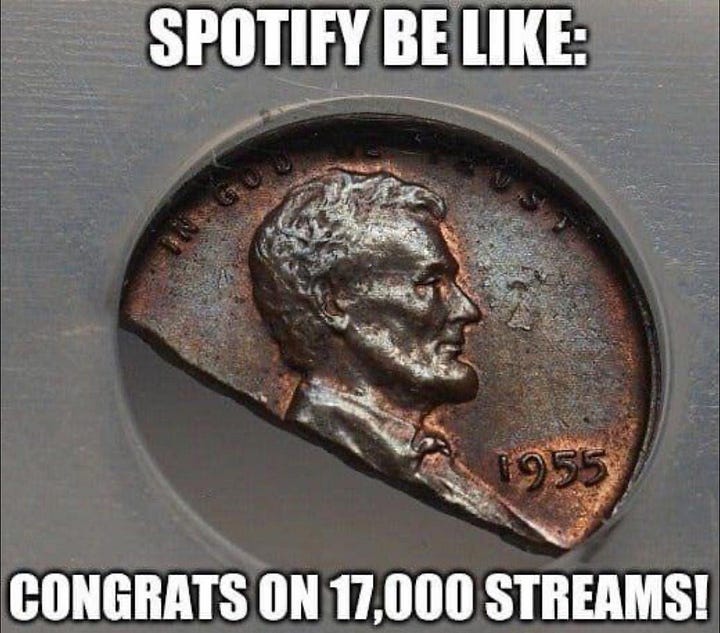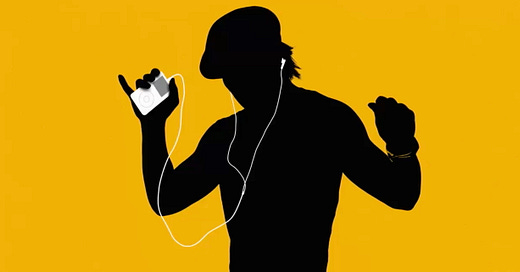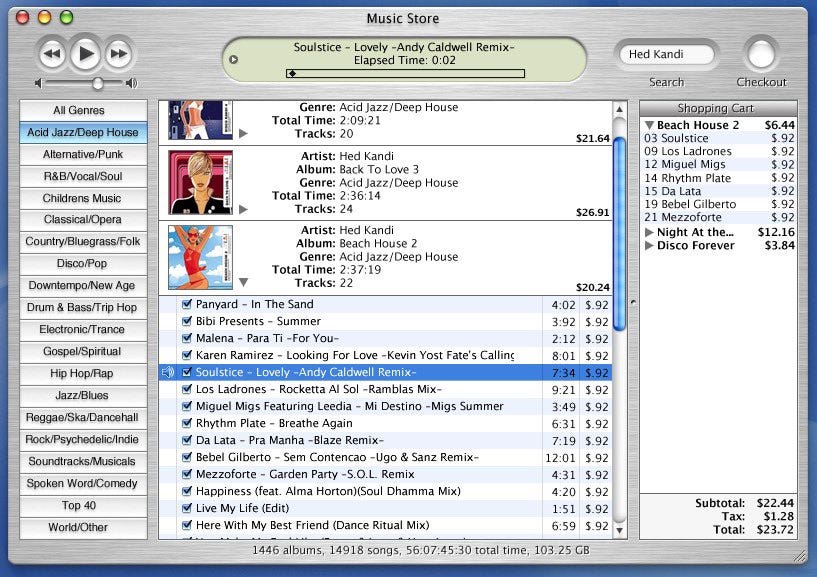When the iTunes Music Store launched in 2003, it revolutionized the way music was consumed and monetized in the digital era. At a time when artists were suffering massive financial losses due to piracy and illegal file-sharing platforms like Napster and LimeWire, Apple's digital marketplace provided a legal and profitable alternative. For the first time, consumers could purchase and download individual songs for $0.99, giving them a convenient and affordable way to support artists while enjoying their favorite tracks.
The impact of the iTunes Music Store was immediate and profound. By offering a seamless purchasing experience, Apple not only curbed music piracy but also created a sustainable revenue model that artists, record labels, and distributors could rely on. It helped the industry recover from its early-2000s slump, with digital downloads becoming a dominant revenue stream. For nearly a decade, purchasing music online was a norm, and artists were paid per song or album sold, which created a transparent and relatively fair revenue model.
"The majority of artists, the majority, want to be compensated for what they do, WE NEED PROTECTION….I'm not against the Internet, I just wish that these things could be done, music could be downloaded legitimately." —LL Cool J
However, the introduction of music streaming services like Spotify, Apple Music, and Amazon Music changed the landscape once again. Streaming, which allows users to access vast libraries of music for a fixed monthly fee, quickly outpaced digital downloads. While this model provided consumers with unprecedented access to music, it also shifted revenue distribution in a way that significantly reduced how much artists earn per stream.
Today, the numbers speak for themselves. According to the Record Industry Association of America (RIAA), music streaming services surpassed 100 million US subscribers in 2024. Paid subscriptions, ad-supported services, digital and customized radio, social media platforms, and digital fitness apps collectively generated a record-breaking $14.9 billion in revenue—a $500 million increase from the previous year. Meanwhile, Spotify, one of the largest streaming platforms, turned a full-year profit for the first time in 2024 and grew its Premium subscriber base to 263 million worldwide.


Yet, despite these massive revenue figures, artists are earning less than ever from their music. Digital downloads now account for only two percent of the industry's total revenue, having dropped by 14.9 percent in the last year. The shift from direct purchases to streaming means that rather than receiving a one-time payment per song or album, artists now earn fractions of a cent per stream—requiring millions of streams to generate the same revenue they once received from just a few thousand album sales. Many musicians have spoken out about the financial struggles imposed by this system, arguing that while music services are thriving, the artists themselves are being shortchanged.
The transition from digital downloads to streaming has undeniably reshaped the music industry, making music more accessible than ever but at the cost of fair compensation for artists. While streaming services continue to profit, musicians are forced to seek alternative revenue streams such as touring, merchandise, and crowdfunding to sustain their careers. The iTunes Music Store once stood as a beacon of profitability and fairness in the digital age, but today, its legacy is overshadowed by a streaming model that prioritises corporate profit over artist equity.
Source: RIAA 2024 Year-End Revenue Report [PDF]
The question remains:
Will the industry ever return to a model where artists are paid fairly for their work?
Interested in working with Michael? Book a free 15 minute call to see if we’re a fit.









